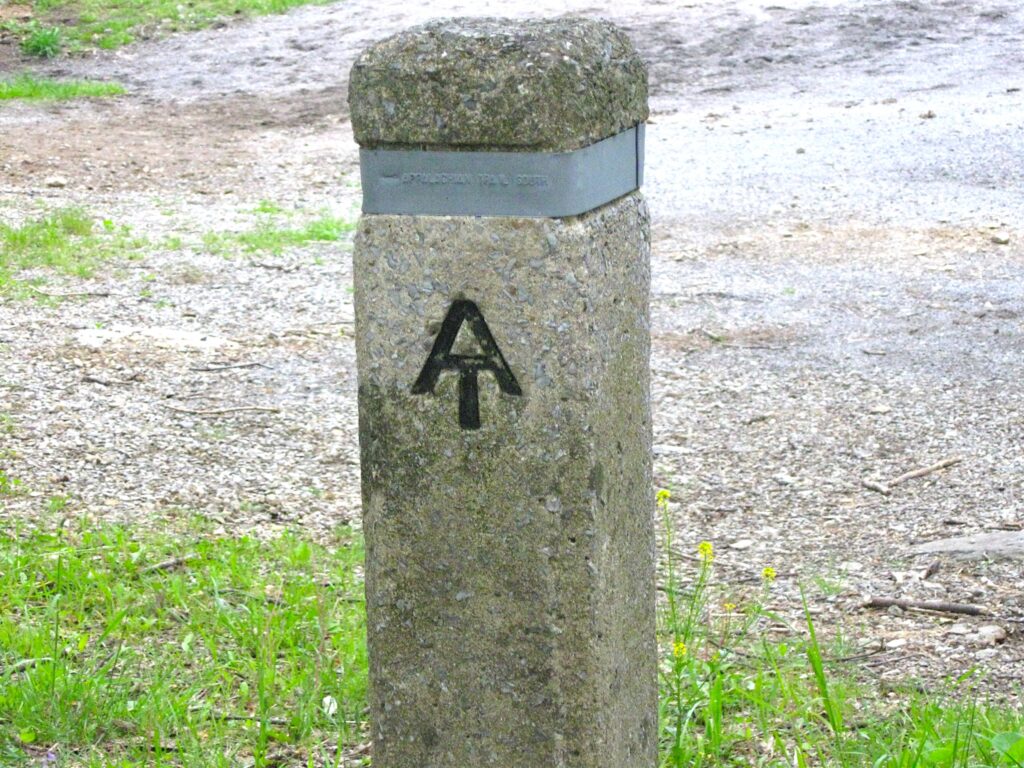The Appalachian National Scenic Trail
any time since 1937

The Appalachian National Scenic Trail was first envisioned in 1921 and completed in 1937. Eleven years later, Earl Shaffer stepped on the Trail at its southern end and then, 124 days later, stepped off the Trail at its northern end, logging roughly 2100 miles. The first verified thru-hiker.
In 1991, Arkansan David Horton hoofed it from one end of the Trail to the other. He did this in 52 days, 9 hours and 42 minutes. No one had ever traversed the trail in this short a time.
It is because of David Horton that I first heard of the idea of considering the 2000+ mile footpath to be a running challenge.
Since Horton’s feat (or feet) on the Trail, the record has been reset several times. Eight years post-Horton, Pete Palmer finished three and a half days quicker. In 2015, Scott Jurek shaved twelve hours off Palmer’s time and set the new record. Three years after that, in 2018, Belgian dentist Karel Sabbe set a new record of 41 days, 7 hours and 39 minutes. That’s 50 miles a day.
These were “supported” hikes, meaning that you’ve got a dedicated team that meets you along the way and supplies you with whatever you need: food, first aid and any other assistance you might require. Not to mention the emotional uplift of hearing your friends repeatedly cheer, “Hip hip hooray!” and “Huzzah!” and “You’re looking good. Only one thousand three hundred miles to go!”
At one time, the record for an unsupported traverse of the Trail was held by Joe “Stringbean” McConaughy. “Unsupported” means you are on your own, responsible for everything you might eat, drink and encounter. You carry all your stuff (except of course, water, which you get along the way.) You do resupply every so often as carrying food for a month and a half is just too much to ask.
But wait. Along comes Tara Dower who engaged in a very peculiar preparation tactic to make her hike go smoothly. A 2100-mile hike, or run, can be brutal to your toenails. So Dower went to her doctor and referring to her toenails, proclaimed, “Take ‘em all off! These toes shall be swift!” This was the best way, she assumed, of not having to deal with hike-ending, or at least hike-postponing subungual hematoma, bruises, discoloration, pain, swelling and infection. (She didn’t actually talk about her toes being swift. I thought that might add to the drama.)
Her doctor, with a nod toward medical ethics, was not in favor of such wholesale action and offered instead to remove four of the potential interlopers.
Once done, Dower accomplished a trip from the north terminus to the south terminus of the A T in less time than it had ever taken a human before. 40 days, 18 hours and 6 minutes. She ran an average of 17.5 hours, or 35 to 62 miles, every day.
During her time on the trail, I guess she didn’t see too many other runners. One remarkable thing the human runner does is, when something might be of a deficit, such as real human contact, we manufacture responses to stimuli that may not be there. During her run, she encountered…
. devils sitting on rocks
. a white cat
. a lion
. a fiend of hers who was not actually there.
She also thinks she might have seen, when in West Virginia, the Mothman.
Could this have anything to do with burning 8000 to 10000 calories a day? Perhaps a slight lack of fuel for the brain?
Let’s look at this hike another way: speed. How fast are you going when you do something as goofy and extraordinary as a 2100-mile run?
trail length
. 2100 miles (this number changes frequently as trails are rerouted)
time it took Tara to do the Trail
. 978.1 hours
overall speed
. 2.147 mph
This may seem deceptively slow, a walking pace. But this includes time that he wasn’t walking/running, doing silly, time-wasting activities like eating, or sleeping.
Also, understand that this footpath is not flat. Overall it has a 520 000-foot altitude change, which is just under 100 miles. This is up-and-down distance.
Can other animals move this fast? Or slowly?
Usain Bolt has been clocked at a fiery 27.8 mph! Were he to do the Trail at this pace, he would finish in just over three days.
How about the mighty mite? This Arachnida has been recorded at a speed of 322 body lengths per second. That’s like you or me running the length of a football field, including end zones, in one second. But for the mite, at its size, 0.50 mph. One half mile per hour. Puny.
Even so, this is far in excess of the previous record holder, the Australian tiger beetle Cicindela eburneola, the former fastest insect in the world relative to body size, which has been recorded at 4.2 mph, or 171 body lengths per second. The cheetah, the fastest land animal, scores only 16 body lengths per second.
This is just fun with numbers and species. The controversy, which is to say, what fries my bacon, is the idea that these folks are running a recreational hiking trail for speed. Harold Allen, an A T planner and volunteer said, “The trail leads not merely north and south, but up to the body, mind and soul of man.” So why the hell would you run it! My orientation is that we go to the Trail because we like being on the Trail. Why would you do your best just to get off the trail asap? Spend a little time, eh?
